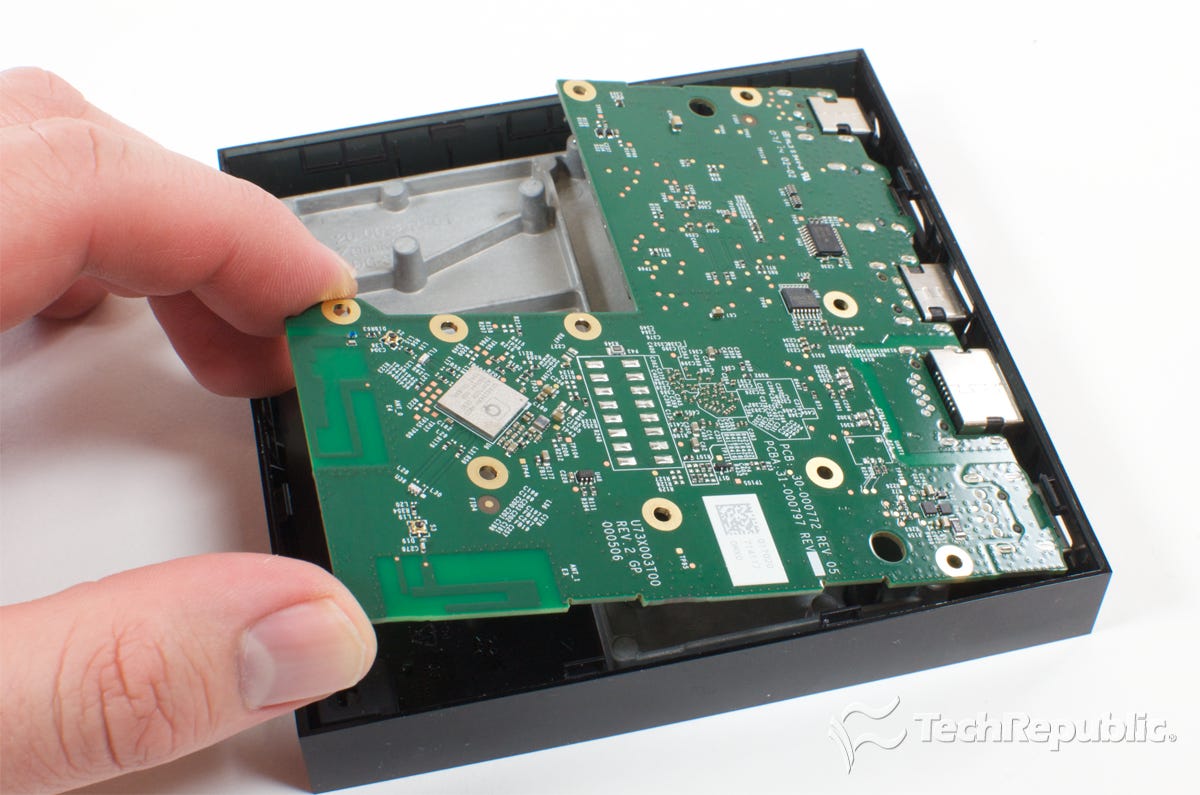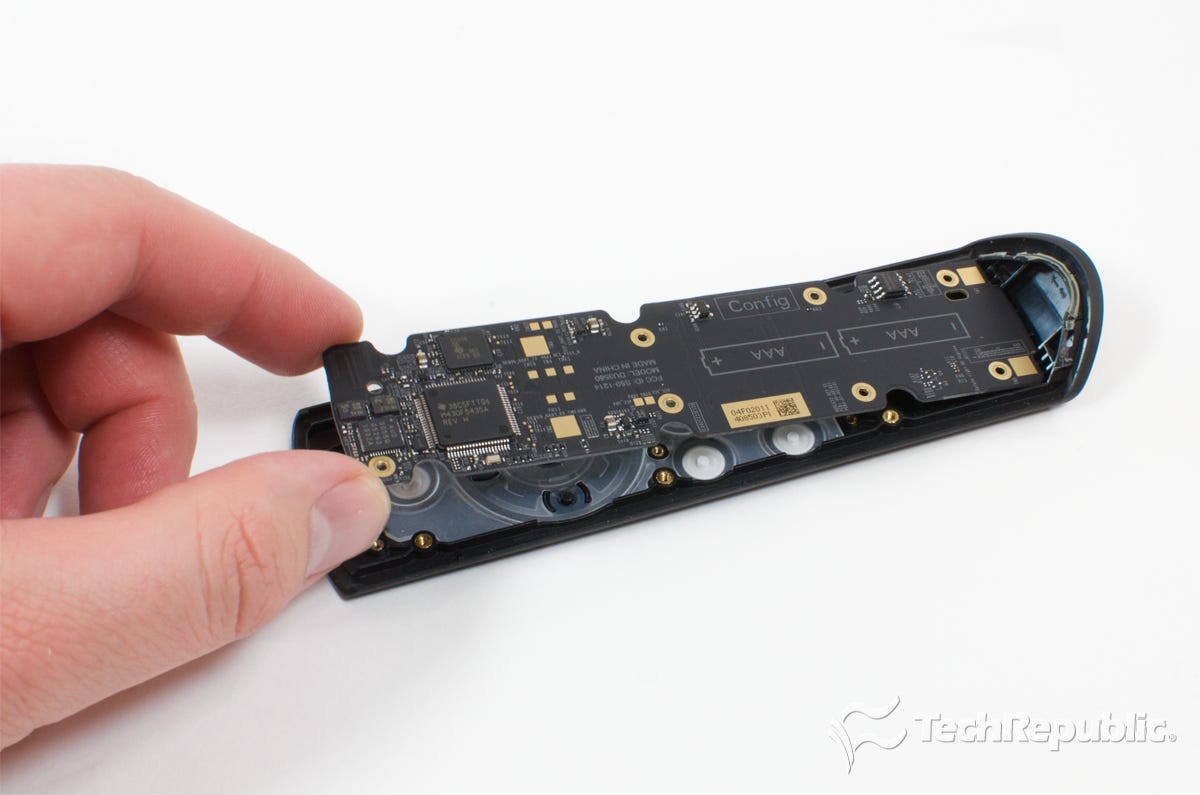Following in the footsteps of the Apple TV and the streaming media players from Roku, the Fire TV is a small black box. It’s 4.5 inches square and just over 0.5 inch thick.
There’s really nothing much to see on the front and sides of the box, but along the back you’ll find a bevy of connectors. There’s a power jack, HDMI port, optical audio port, Ethernet jack, and even a USB slot. The Fire TV’s remote is also similar to those of competition, with one big difference. It has a microphone that viewers can use with the player’s voice search feature.
For a step-by-step teardown guide of the Fire TV and its remote, check out TechRepublic’s full Cracking Open gallery.
Cracking open observations

Bill Detwiler/TechRepublic
- Easy to disassemble: Opening the Fire TV is ridiculously simple. The bottom of the case can be popped off with a thin tool or screwdriver and the box’s single circuit board is held in place with Phillips screws.
- Large heatsink: Like the Apple TV, the Fire TV has a large heatsink to keep it cool.
- Dedicated GPU (sort of): During the Fire TV launch event, Peter Larsen, Amazon VP, touted the box’s “quad-core processor” and “dedicated GPU”. Hearing those words, I hoped to see a discrete graphics chip inside the device. Instead, I found a Snapdragon 600 SoC. The Snapdragon 600 does have a separate CPU (quad-core Krait 300) and GPU (Adreno 320), but both processors are part of the same package and share the same 2GB of RAM. The Fire TV’s GPU isn’t “dedicated” in the same way a desktop or gaming laptop’s graphics card or chip is “dedicated.” This distinction won’t likely matter to the average buyer, but gamers hoping for a console-like experience may be disappointed.


Bill Detwiler/TechRepublic
Better hardware only goes so far
So how does Amazon’s $99 box stack up against the competing players from Apple and Roku?
Well, the Fire TV has a quad-core 1.7 GHz Qualcomm Krait 300 processor and Adreno 320 GPU, 2GB of RAM, and 8GB of internal storage. In contrast, the Apple TV has a single-core Apple A5 SoC, 512MB of RAM, and 8GB of storage. The Roku 3 does have a dual-core Broadcom A9 processor, but like the Apple TV it only has 512MB of RAM.
The Fire TV definitely wins out when it comes to hardware and the voice-enhanced remote is a cool feature. But, having better hardware will only get you so far in the streaming player market. When it comes to media players, the real value is in the content. To find out if Amazon’s box has the shows, movies, and apps you’re looking for, check out Matthew Moskovciak’s full Fire TV review .
(A more detailed version of this story was published on TechRepublic’s Cracking Open blog.)




